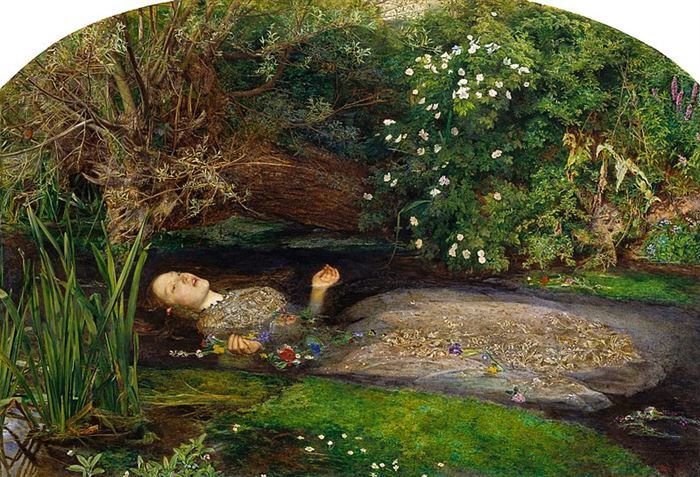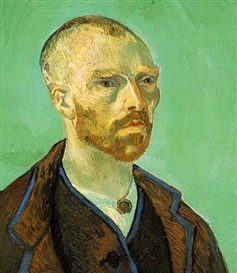Famous Paintings That Reflect Our Mortality Back at Us
Artists have forever found beauty in the concept of death, and painting scenes depicting its presence could very well have been a way of examining and confronting their own mortality
Benjamin Blake Evemy / 黑料不打烊
May 20, 2020

Artists have forever found beauty in the concept of death, and painting scenes depicting its presence could very well have been a way of examining and confronting their own mortality.
John Everett Millais, Ophelia, c. 1851, oil on canvas, Tate Britain, London
Art often possesses the uncanny ability to speak straight to the soul. A painting that is hundreds of years old can be as pertinent when one finds a piece of themselves on the age-old canvas as the day the last brush stroke was finished. One theme that has been forever present in art, is that of death. It is a subject that, if not already, will someday be extremely intimate to each and every one of us. And in this current time, with the Coronavirus bringing us such scenes as mass graves in New York and processions of military trucks slow-driving through the streets of Milan, their covered beds host to the legion of dead, it is a subject uncomfortably close to our hearts. So, let us embrace the inevitable, stare death right in the eyes, as we peruse this black-veiled gallery of famous paintings that reflect our mortality back us.
William Holbrook Beard, Power of Death, c. 1889–90, oil on board, Fogg Art Museum, Harvard University, Cambridge
Death comes for even the most powerful of man and beast, leaves them nothing but corporeal husks, drained of all life. William Holbrook Beard’s Power of Death perfectly encapsulates this sentiment. A tiger fights with every ounce of survival instinct it possesses, but will inevitably join the other majestic wild animals that lay in eternal slumber at Death’s feet.
George Frederick Watts, Found Drowned, c. 1850, oil on canvas, Watts Gallery, Compton
George Frederick Watts’ Found Drowned was inspired by Thomas Hood’s 1844 poem ‘The Bridge of Sighs,’ concerning a young woman who threw herself from London’s Waterloo Bridge into the cold waters of the Thames. The poor waif clutches a locket in one hand, as she lays half submerged; an ode to a lover left behind in the land of the living. In the smog-choked sky above, a lone star burns, reflecting a hope that someday the two will be reunited in another realm.
Caravaggio, Saint Francis in Prayer, c. 1606, oil on canvas, Galleria Nazionale d'Arte Antica, Rome
Caravaggio’s Saint Francis in Prayer is an extremely powerful painting. While gazing upon Saint Francis meditating upon mortality, we find that we are ourselves are doing the same. A copy (or perhaps an original – there has been some speculation) fittingly hangs in the Capuchin Crypt museum located beneath the Santa Maria della Concezione dei Cappuccini church in Rome.
Vincent van Gogh, Head of a skeleton with a burning cigarette, c. 1885-86, oil on canvas, Van Gogh Museum, Amsterdam
Van Gogh’s famed Head of a skeleton with a burning cigarette is a stark confrontation with our deathly vices. While the painting has been interpreted as a criticism of cigarette smoking, van Gogh himself was a fervent smoker, and continued to partake until his death in 1890.
Gustav Klimt, Death and Life, 1915, oil on canvas, Leopold Museum, Vienna
However splendid the joys of life can be, death is always waiting in wings. Our loves, hopes, family, friends, faith and security will all someday have an end. Gustav Klimt’s famed Death and Life is a breathtakingly beautiful representation of this contrast. A rosy-cheeked woman clutches a young infant with a look of such utter contentedness, while Death looks on with sickening anticipation. The colors used in the ‘life’ side of the painting are vivid and warm, the colors on the ‘death’ side, dark and cool, giving the painting an almost-tangible feeling of ambivalence.
Carlo Levi, Donne Morte, 1942, oil on canvas, Fondazione Carlo Levi, Rome
At times, humankind can be much, much, crueler than death itself. This is exemplified in Carlo Levi’s 1942 poignant and unsettling painting, Donne Morte, which depicts a pile of stripped and lifeless female figures. In 1931 the Italian writer and artist joined the anti-fascist Justice and Freedom movement, which led to his subsequent arrest and confinement. During WWII, Levi was a part of the Resistance, and during that period his artistic style flourished, resulting in paintings that touched the good in humanity’s soul, while admonishing the evil, which, at times, dwells in its core like a cancerous growth.
Pieter Bruegel the Elder, The Triumph of Death, c. 1562, oil on panel, Museo del Prado, Madrid
The Triumph of Death. This sixteenth century painting, by Pieter Bruegel the Elder, depicts a tableau in which a skeletal army brings humanity to its knees. From peasant to king, no soul is immune from the utter destruction Death’s troops wreak. Even an unclothed wretch who seeks refuge in a hollowed tree trunk, finds himself impaled by a lance. And in the upper left-hand corner of the panel painting, a pair of skeletons can be seen ringing a set of bells. The death-knell of the world is being rung out over an earth scorched and spent.
Artists have forever found beauty in the concept of death, and painting scenes depicting its presence could very well have been a way of examining and confronting their own mortality. But let us not despair. Life is a beautiful thing, and without the eternal presence of death, it would lose much of its value. In this cataclysmic time of Covid-19, it is important that we come to terms with the possibility that life may be more fleeting than we initially thought, and using art as a way to help us achieve that is something very special indeed.
For more on auctions, exhibitions, and current trends, visit our Magazine Page






















